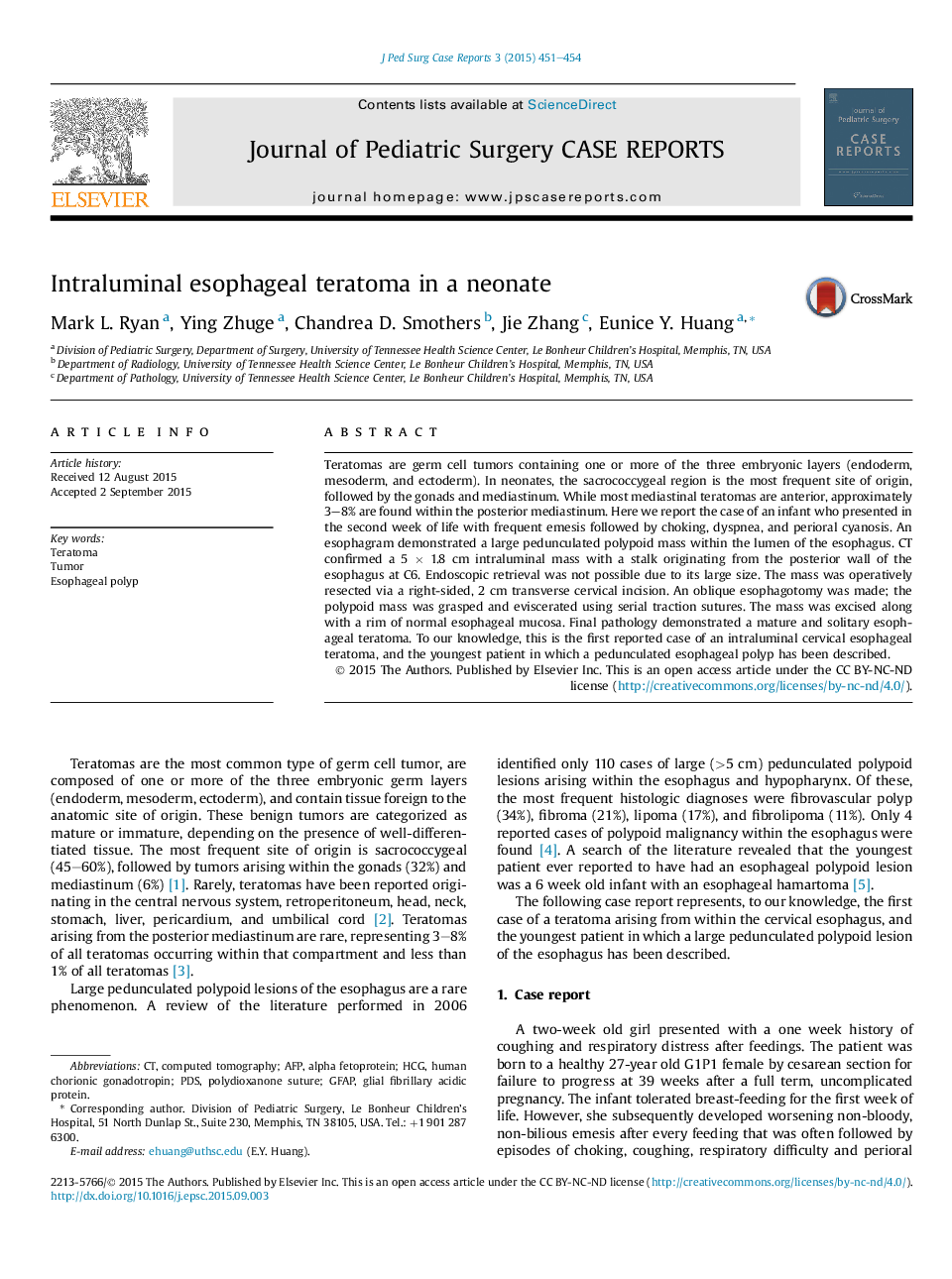| Article ID | Journal | Published Year | Pages | File Type |
|---|---|---|---|---|
| 4161181 | Journal of Pediatric Surgery Case Reports | 2015 | 4 Pages |
Teratomas are germ cell tumors containing one or more of the three embryonic layers (endoderm, mesoderm, and ectoderm). In neonates, the sacrococcygeal region is the most frequent site of origin, followed by the gonads and mediastinum. While most mediastinal teratomas are anterior, approximately 3–8% are found within the posterior mediastinum. Here we report the case of an infant who presented in the second week of life with frequent emesis followed by choking, dyspnea, and perioral cyanosis. An esophagram demonstrated a large pedunculated polypoid mass within the lumen of the esophagus. CT confirmed a 5 × 1.8 cm intraluminal mass with a stalk originating from the posterior wall of the esophagus at C6. Endoscopic retrieval was not possible due to its large size. The mass was operatively resected via a right-sided, 2 cm transverse cervical incision. An oblique esophagotomy was made; the polypoid mass was grasped and eviscerated using serial traction sutures. The mass was excised along with a rim of normal esophageal mucosa. Final pathology demonstrated a mature and solitary esophageal teratoma. To our knowledge, this is the first reported case of an intraluminal cervical esophageal teratoma, and the youngest patient in which a pedunculated esophageal polyp has been described.
